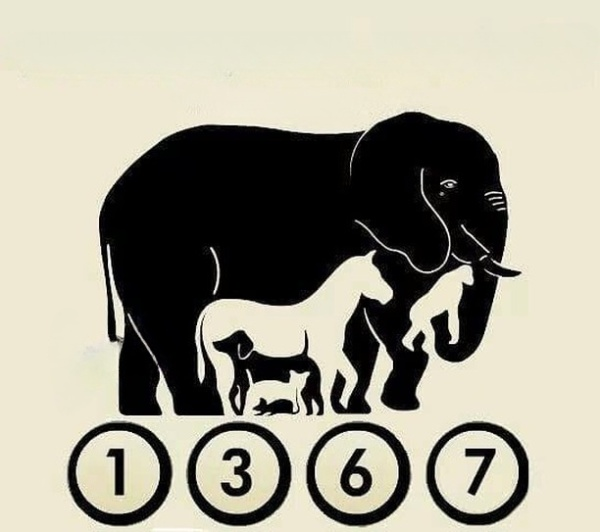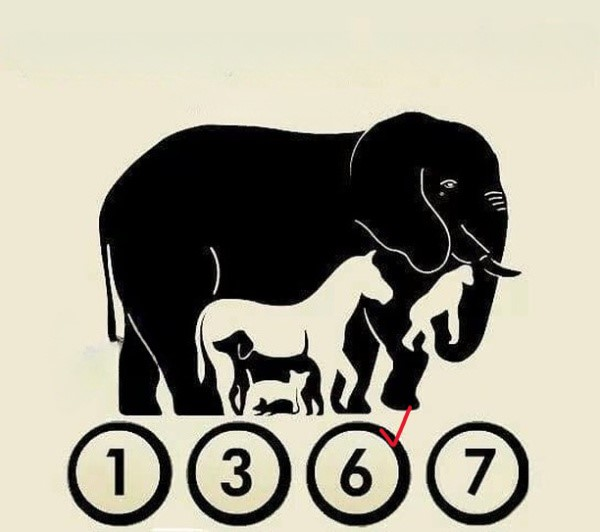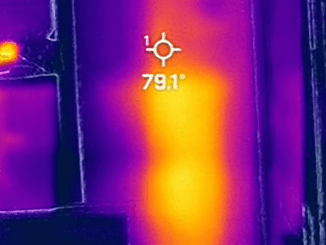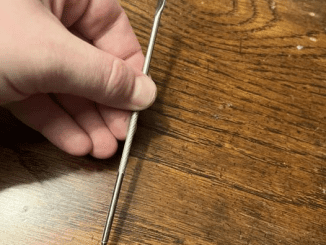Do you love a good visual challenge? Here’s one that’s sure to test your observation skills and keep your brain buzzing. The question is simple: How many animals can you spot in this picture?
At first glance, the image may seem straightforward—maybe you see one or two animals right away. But take a closer look, and you’ll discover a cleverly hidden array of creatures waiting to be uncovered. Ready to dive in? Let’s explore why this puzzle is so tricky and uncover all the hidden animals step by step.
Why Visual Puzzles Like This Are So Challenging

Visual puzzles can be surprisingly difficult, even when they look simple at first. Why? It all comes down to how our brains process information.
- Jumping to Conclusions
Our brains are wired to recognize familiar shapes and patterns quickly. Once we think we’ve “solved” the image, we often stop looking, missing subtle details that are hidden in plain sight. - Focus on Dominant Shapes
Large, bold outlines tend to capture our attention, while smaller or less defined elements fade into the background. This is a key challenge in puzzles like this one. - Overthinking the Image
Sometimes, people try too hard to find hidden details, imagining animals that aren’t actually there. This can lead to inflated guesses or unnecessary frustration.
Sound familiar? Don’t worry—you’re not alone! Let’s break the puzzle down step by step and uncover every hidden animal.
Step-by-Step Guide to Finding All the Animals
Follow this guide to systematically uncover every animal hidden in the picture.
Step 1: Spot the Largest Animal
The first and most obvious creature in the image is the elephant. Its massive size dominates the composition, with its trunk, ears, and legs forming the primary outline.
Step 2: Look at the Trunk
Within the elephant’s trunk, you’ll find the second animal: a gorilla. Its outline is subtle, but the curved lines and shading reveal its distinct shape.
Step 3: Focus on the Elephant’s Body
Now, shift your attention to the elephant’s belly and legs. Together, these elements form the outline of a horse, complete with a visible head, mane, and legs.
Step 4: Look Beneath the Horse
Beneath the horse, you’ll notice a smaller dog nestled into the design. Its outline is trickier to spot but becomes clear when you focus on the lower portion of the image.
Step 5: Spot the Cat
Below the dog, you’ll find a hidden cat. This animal is more compact and requires a sharp eye to catch, as it’s cleverly tucked into the composition.
Step 6: The Smallest Animal
Finally, beneath the cat lies the tiniest creature of all: a mouse. Its small size makes it easy to overlook, so take your time to examine the lower edges of the picture.
The Final Tally: Six Hidden Animals
Let’s recap all the animals in the image:
- Elephant – The most visible and dominant figure.
- Gorilla – Hidden in the elephant’s trunk.
- Horse – Formed by the elephant’s body and legs.
- Dog – Found beneath the horse.
- Cat – Nestled below the dog.
- Mouse – The tiniest animal, located at the bottom of the image.
If you spotted all six, congratulations! Your observation skills are on point.

Why Puzzles Like This Are Good for Your Brain
Solving puzzles isn’t just entertaining—it’s also a fantastic workout for your mind. Here’s how challenges like these benefit your brain:
- Enhances Observation Skills: Puzzles force you to notice details you might otherwise overlook, improving your attention to detail.
- Improves Focus: Concentrating on intricate designs helps train your brain to stay on task.
- Boosts Problem-Solving Skills: Analyzing and breaking down puzzles develops logical thinking and strategic approaches.
- Encourages Patience: Finding hidden elements requires persistence, which can help you build patience in other areas of life.
- Relieves Stress: Engaging in puzzles can be a relaxing activity, giving your mind a break from daily worries.
Tips for Mastering Visual Puzzles
Want to get even better at solving puzzles like this one? Try these tips:
- Take Your Time: Don’t rush! Slow down and examine every detail carefully.
- Break the Image Into Sections: Mentally divide the image into smaller parts and analyze each section thoroughly.
- Look for Patterns: Identify consistent elements in the image to spot where something deviates.
- Practice Regularly: The more puzzles you solve, the sharper your observation skills will become.
- Challenge Friends and Family: Competing with others can make the process more fun and keep you motivated.
Let’s Hear From You!
How did you do on this challenge? Did you manage to find all six animals, or did one (or more) sneak past you? Share your experience in the comments below! We’d love to hear your final count, how long it took you, and whether you used any tricks to solve it.
Better yet, share this puzzle with your friends and family to see who has the sharpest eyes. It’s always fun to turn a brain teaser into a friendly competition!
Conclusion: Keep Sharpening Your Skills
This puzzle is a perfect example of how a seemingly simple challenge can reveal so much complexity. By taking the time to analyze the image and look for hidden details, you not only solved the mystery but also honed valuable cognitive skills.
Feeling inspired? There are countless puzzles out there just waiting to be solved. Keep challenging yourself, and you’ll soon find that your ability to spot hidden details, think logically, and stay focused will only improve.
Remember: the joy of puzzles isn’t just in finding the answer—it’s in the journey of discovery. So keep exploring, keep solving, and most importantly, have fun along the way!


